Ordering Decimals - Definition, Examples, Quiz, FAQ, Trivia
Understanding How to Compare and Arrange Decimal Numbers
What is Ordering Decimals?
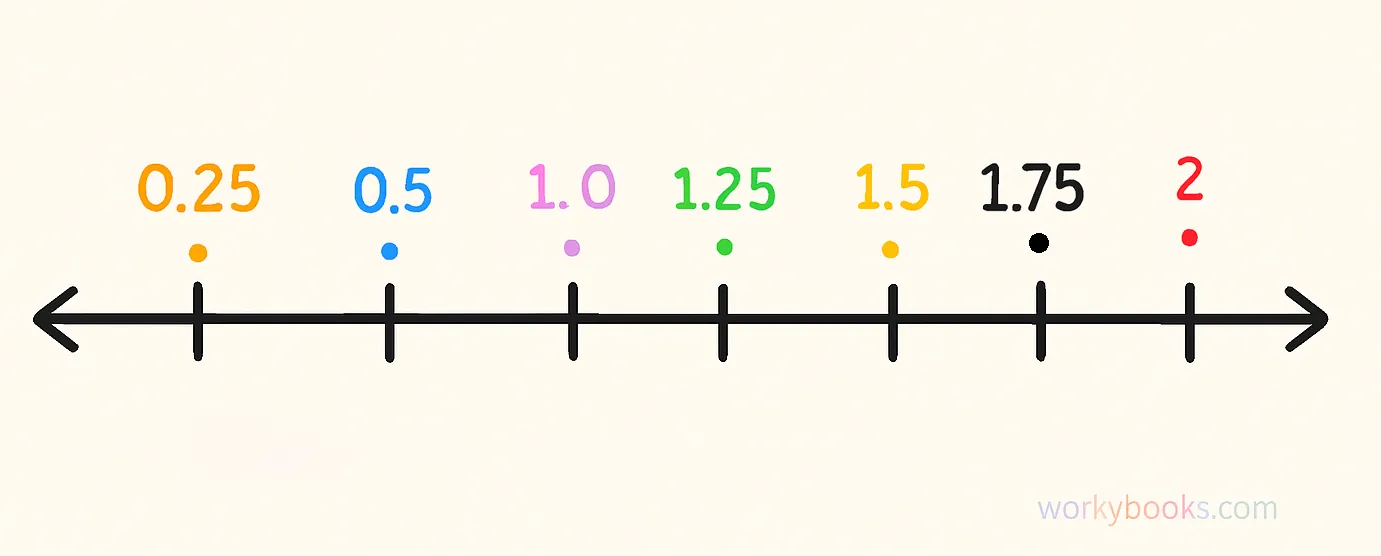
Ordering decimals means arranging decimal numbers from smallest to largest or largest to smallest. Decimals are numbers that have a whole number part and a fractional part separated by a decimal point.
Think of decimals like parts of a whole. For example, 0.5 means "five tenths" or half of something. When we order decimals, we're figuring out which parts are smaller and which are larger.
Math Tip!
Remember that the decimal point separates the whole number part (to the left) from the fractional part (to the right). The first digit after the decimal point represents tenths, the second represents hundredths, and so on.
How to Order Decimals
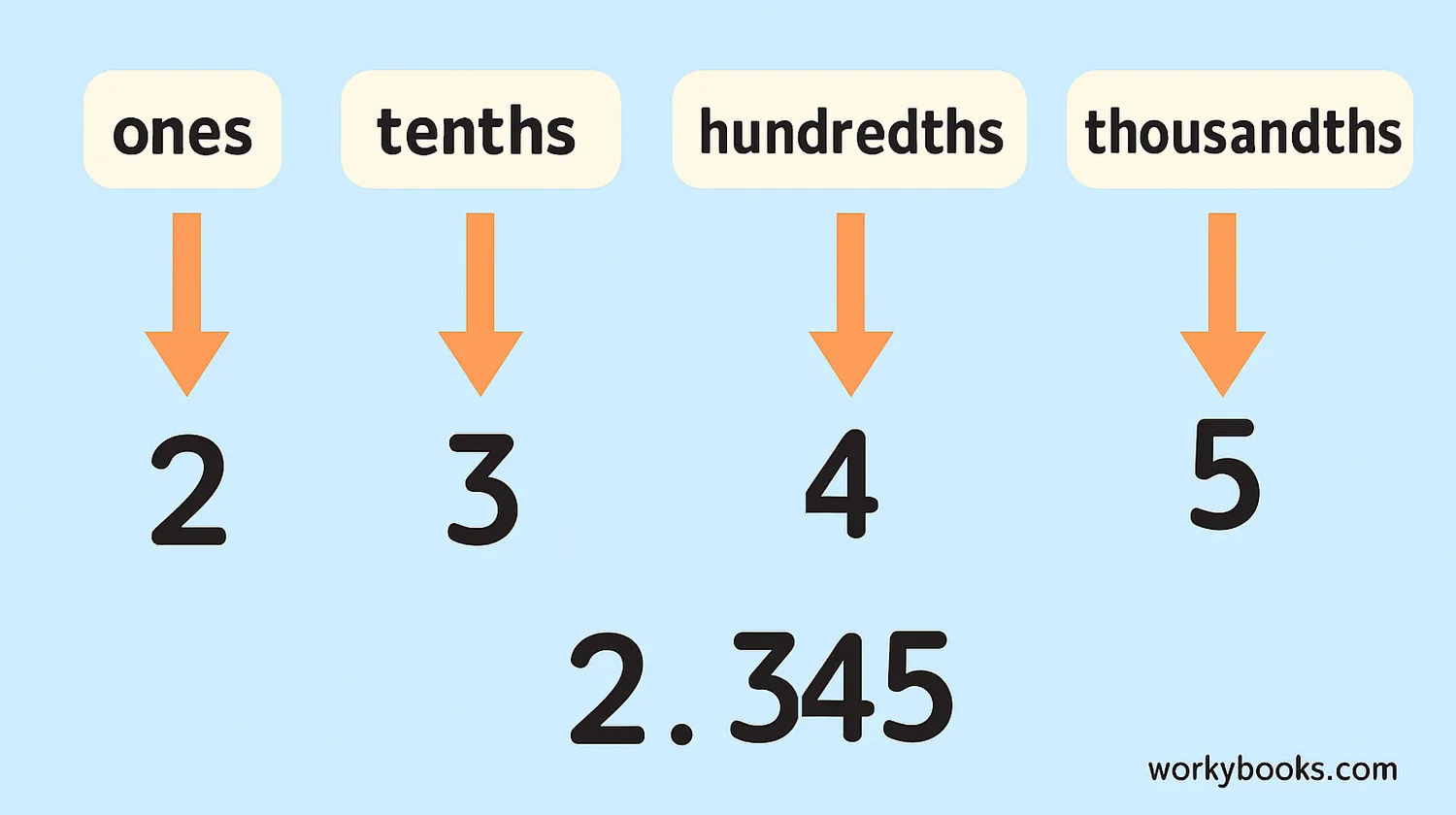
Ordering decimals follows a simple step-by-step process. Here's how you can do it:
Compare Whole Numbers
Look at the numbers to the left of the decimal point first
Compare Tenths
If whole numbers are equal, look at the first digit after the decimal
Compare Hundredths
If tenths are equal, move to the next digit
Continue Comparing
Keep comparing digits until you find a difference
Arrange in Order
Place the numbers in the requested order (least to greatest or vice versa)
Remember: You can add zeros to the end of decimals to make them all have the same number of decimal places. This makes comparing easier!
For example: 0.4 is the same as 0.40 and 0.400. Adding zeros doesn't change the value of the decimal.
Ordering Decimals from Least to Greatest
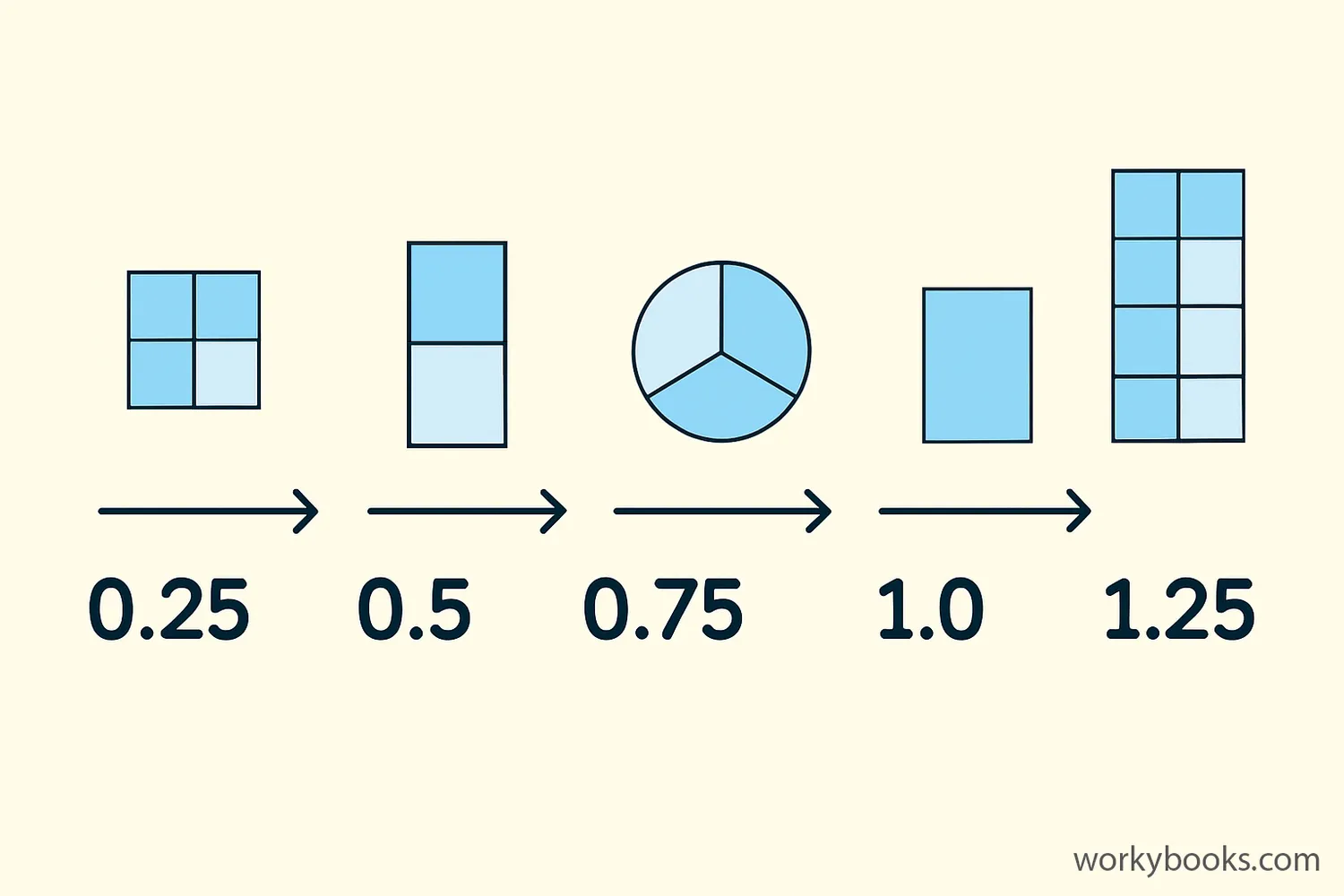
When we order decimals from least to greatest, we're arranging them from the smallest value to the largest value. This is also called ascending order.
Ordered from least to greatest: 0.25, 0.3, 0.375, 0.4
Here's a trick: Think of decimals as money. $0.25 is less than $0.30, which is less than $0.37, which is less than $0.40. This can help you visualize which decimals are smaller and which are larger.
Practice Strategy
When ordering decimals, it helps to write them with the same number of decimal places. For example, change 0.3 to 0.30, 0.25 stays 0.25, 0.375 stays 0.375, and 0.4 to 0.40. Then compare them as whole numbers: 25, 30, 375, 40.
Compare and Order Decimals
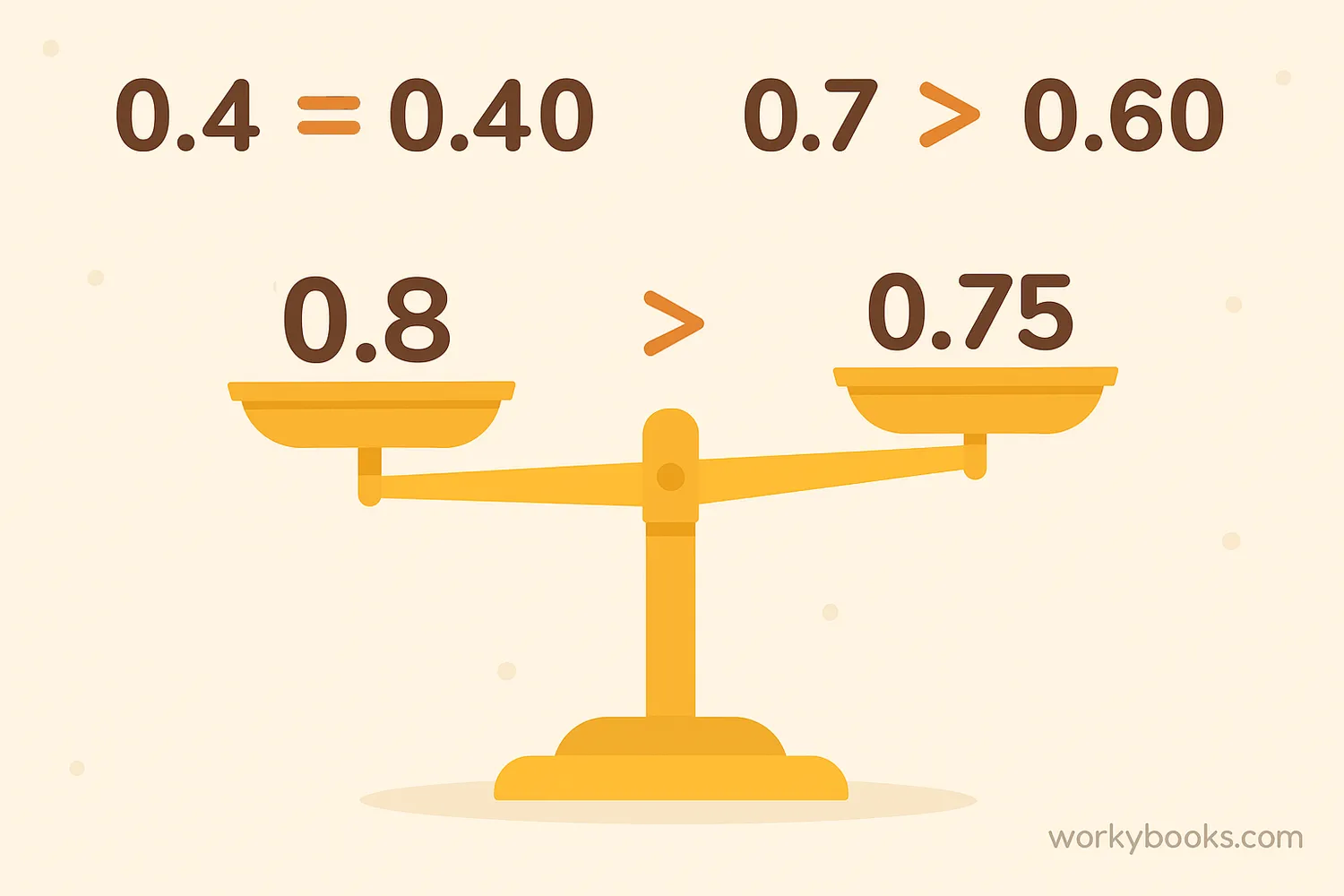
Comparing decimals means determining which is larger, smaller, or if they are equal. We use special symbols to show these relationships:
Less Than <
Points to the smaller number
Greater Than >
Points to the larger number
Equal To =
Shows numbers have the same value
When comparing decimals, remember that the number of digits doesn't always tell you which is larger. For example, 0.3 is larger than 0.25 even though 0.25 has more digits!
Remember This!
The alligator mouth (< or >) always wants to eat the bigger number! So 0.8 > 0.75 means 0.8 is greater than 0.75 because the mouth is pointing toward 0.8.
Examples of Ordering Decimals
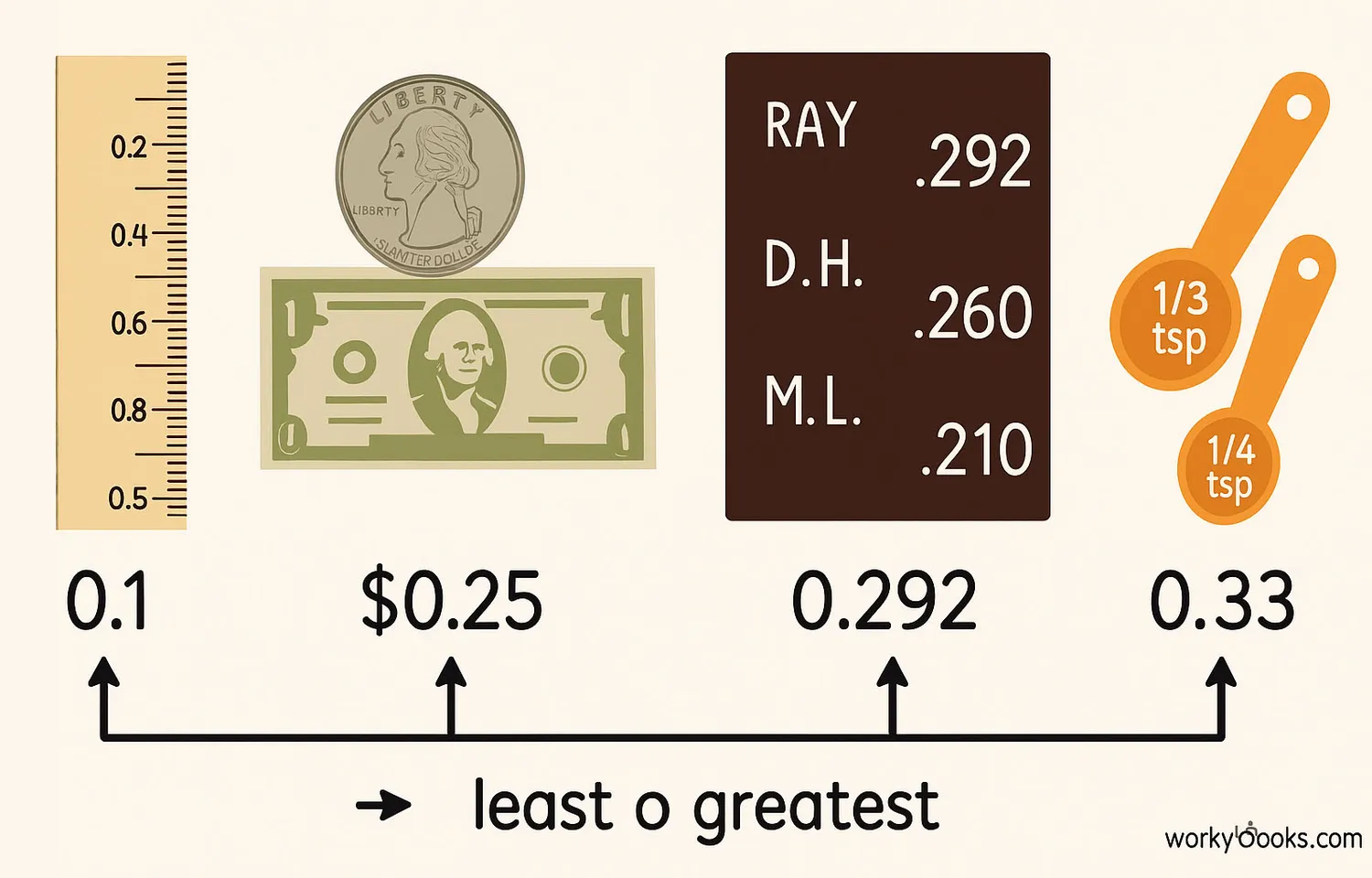
Let's look at some examples to practice ordering decimals:
Example 1
Order 0.7, 0.07, 0.71, 0.701 from least to greatest
Example 2
Order 1.25, 1.5, 1.05, 1.225 from greatest to least
Example 3
Compare: 0.4 ○ 0.40 (use <, >, or =)
In real life, we order decimals all the time without even realizing it! When we look at prices, measure ingredients for recipes, or check athletes' statistics, we're using decimal ordering skills.
Real-World Application
When shopping, you might see prices like $2.99, $3.25, and $2.50. Ordering these from least to greatest helps you find the best deal: $2.50, $2.99, $3.25.
Ordering Decimals Quiz
Test your knowledge with this quiz! Answer all 5 questions to see how much you've learned about ordering decimals.
Frequently Asked Questions
Here are answers to some common questions about ordering decimals:
Math Facts About Decimals
Discover some fascinating facts about decimals and their history!
Decimal History
The decimal system we use today was popularized by Simon Stevin, a Flemish mathematician, in the 16th century. Before decimals, people used fractions for everything!
Decimal Point Origin
The decimal point was invented separately by both John Napier (Scotland) and Jobst Bürgi (Switzerland) in the early 1600s. Different countries use different symbols - some use a comma instead of a point!
Decimal Measurements
The metric system is based on decimals, which makes conversions easy. For example, there are 10 millimeters in a centimeter, 100 centimeters in a meter, and 1000 meters in a kilometer.
Decimals in Money
Most countries use decimal currency systems. The US dollar is divided into 100 cents, the euro into 100 cents, and the British pound into 100 pence. This makes financial calculations much simpler!





